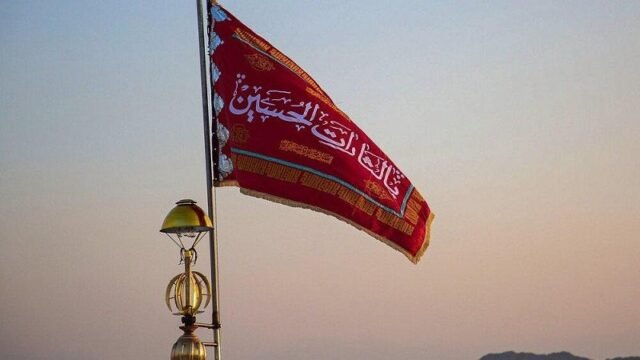In a significant and highly symbolic gesture, Iran has officially raised the Red Flag of Revenge, signaling a grave turning point in its posture toward its adversaries. The raising of this flag — draped in blood-red, ominous and historic — is not merely ceremonial. It is an unmistakable message: a vow of vengeance, a declaration of justice to be served, and a signal of escalation.
🟥 What Does the Red Flag Mean?
In Shia Islamic tradition, the red flag is a powerful symbol. It is often flown over mosques or shrines to signify blood unjustly shed and a call for vengeance. Unlike the white flag of surrender or the black flag of mourning, the red flag is a battle cry — a commitment that justice will be pursued, no matter how long it takes.
Historically, red flags in Iran have been associated with the martyrdom of Imam Hussein, the Prophet Muhammad’s grandson, whose death at the Battle of Karbala in 680 AD is a cornerstone of Shia identity and symbolism. Raising such a flag today evokes not only religious emotion but a nationalistic and militaristic tone — blending martyrdom with modern geopolitics.
⚔️ Why Now? What Triggered It?
While official reasons are not always stated immediately, the raising of the Red Flag usually follows a significant national tragedy or an act perceived as aggression against Iran’s interests. This could be in response to:
- The killing of a prominent Iranian figure, such as a military commander or scientist.
- A foreign attack or drone strike.
- Rising tensions involving Western or regional powers like the U.S., Israel, or others.
Raising this flag is Iran’s way of saying retaliation is inevitable. It signals that the time for mourning is over — and the time for retribution has begun.
🕌 Where Was It Raised?
Typically, the Red Flag is raised atop the Jamkaran Mosque in Qom, or another sacred Shia site. The act is steeped in ritual and viewed live by millions, both domestically and abroad. The flag is usually accompanied by chants, prayers, and military anthems, blending spiritual mourning with political messaging.
🔥 What Are the Implications?
This move sends shockwaves through the international community. It indicates:
- Potential military retaliation or asymmetric warfare in the near future.
- An escalation of tensions in the Middle East — especially involving Iran, Israel, and the U.S.
- A rallying of national and regional allies who share Iran’s sense of grievance.
- Possible attacks on foreign embassies, interests, or military assets.
- Increased volatility in oil markets and regional security alerts.
Analysts will be watching closely for mobilization of Iran’s IRGC (Islamic Revolutionary Guard Corps) or proxy groups like Hezbollah or the Houthis, which could act on Tehran’s behalf.
🗣 Public and Global Reaction
Social media and state television are already amplifying the event. Within Iran, it stirs national unity, defiance, and grief. Internationally, it causes unease and strategic recalibration, especially among intelligence agencies and diplomats.
Global powers may respond with statements urging restraint, but behind the scenes, military assets are often moved, alerts raised, and embassies cautioned. The symbolic act may be the calm before the storm — or the first spark of a much larger conflict.
In Summary:
The Red Flag of Revenge is Iran’s loudest symbolic cry for justice, steeped in religion, history, and military intent. It doesn’t always precede immediate war, but it always signals that Iran considers itself wounded — and is preparing to strike back.
Stay alert. The world watches.




















